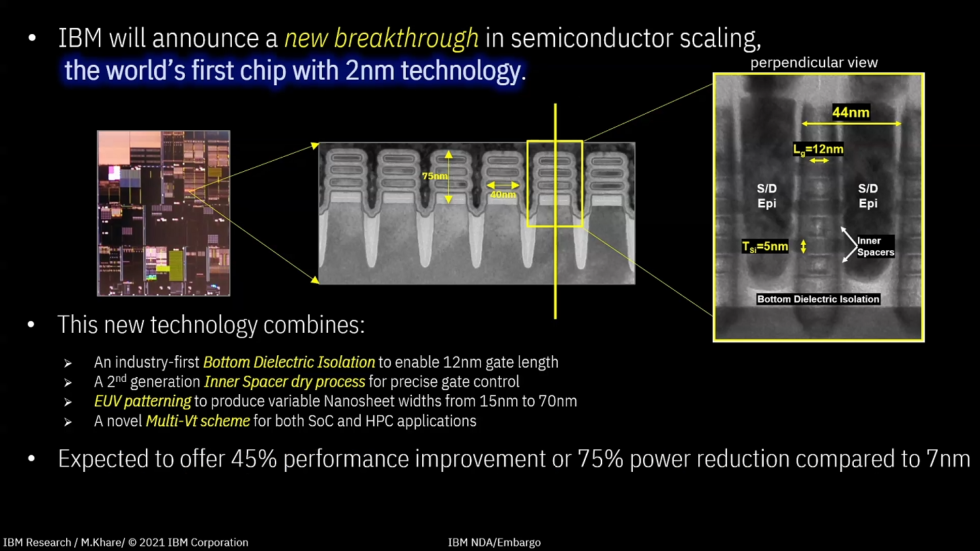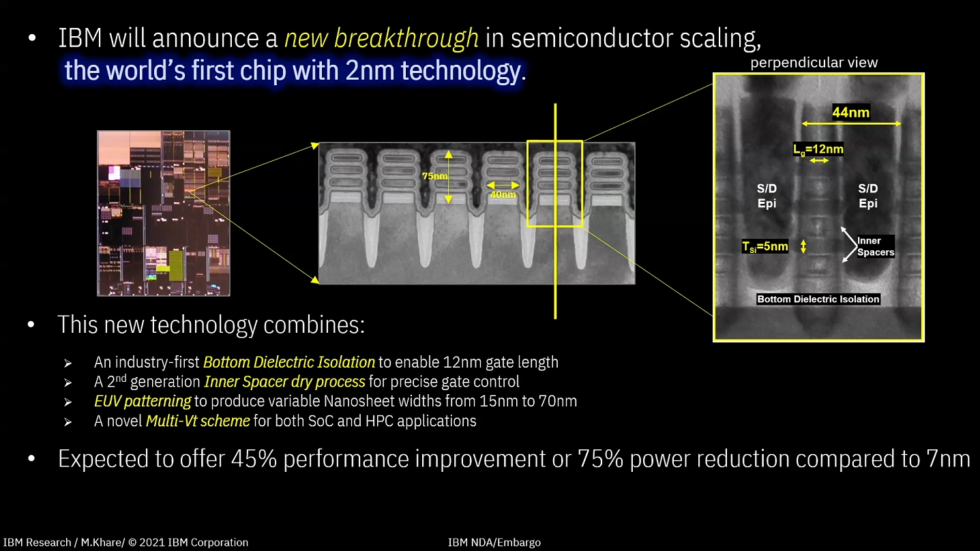-

This slide from IBM’s preview announcement gives more detail on the new process design. [credit: IBM ]
Thursday, IBM announced a breakthrough in integrated circuit design—the world’s first 2 nanometer process. IBM says its new process can produce CPUs capable of either 45 percent higher performance, or 75 percent lower energy use than modern 7 nm designs.
If you’ve followed recent processor news, you’re likely aware that Intel’s current desktop processors are still laboring along at 14 nm, while the company struggles to complete a migration downward to 10 nm—and that its rivals are on much smaller processes, with the smallest production chips being Apple’s new M1 processors at 5 nm. What’s less clear is exactly what that means in the first place.
Originally, process size referred to the literal two-dimensional size of a transistor on the wafer itself—but modern 3D chip fabrication processes have made a hash of that. Foundries still refer to a process size in nanometers, but it’s a “2D equivalent metric” only loosely coupled to reality, and its true meaning varies from one fabricator to the next.




